Pros
Cons
Introduction
Product Overview
{{section_header}}{{section.name}}{{/section_header}}
Meet the beautiful Sennheiser HD 598s.
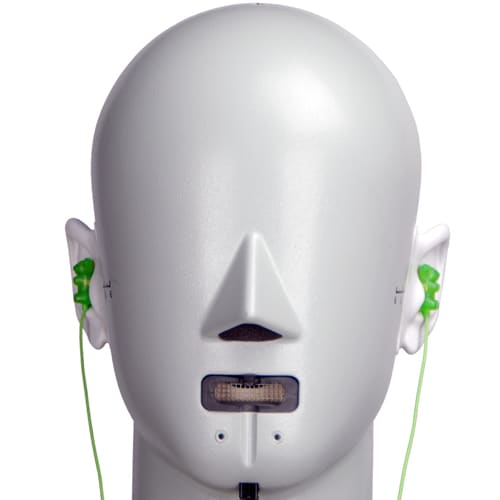
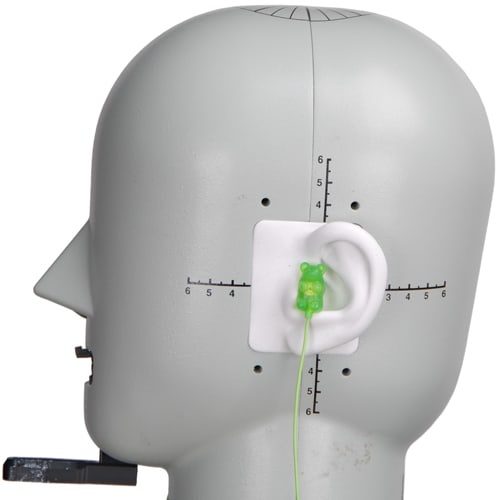
Speakers
{{section_header}}{{section.name}}{{/section_header}}
Guarded by a translucently thin fine cloth mesh is the speaker element of the {{product.name}}.
Back
{{section_header}}{{section.name}}{{/section_header}}
Here we see the detailed back of the {{product.name}}s, with the open back of the ear cups accented with luxurious-looking burlwood and metal mesh.
Band
{{section_header}}{{section.name}}{{/section_header}}
The band of the {{product.model}}s is padded with a soft plasticine leather wrapped around soft foam, cradling your skull nicely.
Cable
{{section_header}}{{section.name}}{{/section_header}}
The cable of the {{product.name}}s is a rather long 10 feet, but it seems to be robust and insulated well enough to withstand a few accidental kicks, chair rollovers or tugs.
Diverging from the norm of many of the headphones we've reviewed, the {{product.name}}s are capped by a straight 1/4th inch plug. Should you need to change this up, included in the packaging is a 1/4th to 1/8th inch adapter.
The cord guard of the {{product.name}}s is robust enough, though a bit small. Do not fear though, as the reason for this is quite good: You can pull the cord out of the ear cup to replace it if you elect to do so, or if there is a breakage issue later on down the line.
In the Box
{{section_header}}{{section.name}}{{/section_header}}
When you unpack your box of {{product.name}}s, you'll pull out your cans, a 1/4th to 1/8th inch adapter, and a small amount of documentation regarding your tailor-made "audiophile" headphones.
Durability
{{section_header}}{{section.name}}{{/section_header}}
As the {{product.name}}s are open-backed, there are certain precautions that you need to take in order to preserve your high-priced cans. Because the electronics are essentially bare to the elements, you should not take the {{product.name}}s outside, nor should you let them come into contact with humid air, as this may over time damage your cans.
The good news? Even though cables are often the first things to break on headphones, the {{product.name}}s allow you to re-cable your cans easily should they break or suffer unacceptable internal wear and tear. This is a great feature to have, as we can tell you from horrible, horrible experience.
Aesthetics
{{section_header}}{{section.name}}{{/section_header}}
Sennheiser really sunk a lot of time and effort into making the {{product.model}}s appear as opulent as their pricetag would suggest. With a creamy beige casing with burlwood accents, the {{product.name}}s look like they were carved out of an audiophile's dream, and sold online. This rather extravagant detailing may not be for everyone, however, especially if you have a rather strong distaste for the bourgeoisie.
Frequency Response
{{section_header}}{{section.name}}{{/section_header}}
For those of you out there that are very demanding with your cans' frequency response, take a gander at that of the {{product.name}}s: it's very flat. The bass frequencies and the beginning of the mid-tones are ever so slightly emphasized, but overall the {{product.name}}s stay well within our ideal limits, and only run into issues at the very high end (we're talking the very highest end of sibiliance and definition of treble frequencies beyond 10kHz). Very well done, Sennheiser!

Click here for more information on our frequency response test.
Distortion
{{section_header}}{{section.name}}{{/section_header}}
Surprisingly enough, the {{product.name}}s actually do have a teeny tiny amount of distortion in the very lowest end, but nothing that is going to be annoying to you. Audiophiles will be quick to point out any imperfection, but speaking as a Linguist, this editor can tell you that very few people at all will ever be able to hear this.
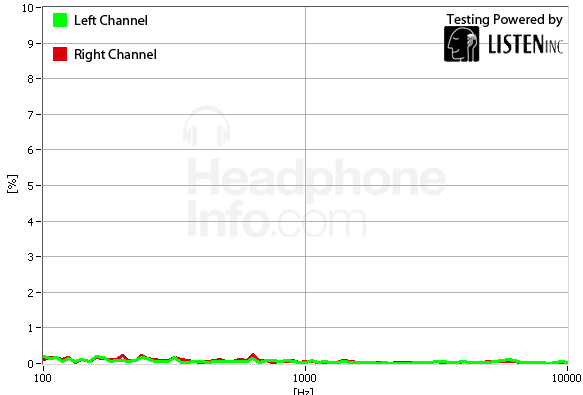
Click here for more information on our frequency response test.
Tracking
{{section_header}}{{section.name}}{{/section_header}}
The response of the {{product.name}}s aren't perfect, but any swing in channel preference is typically below 2dB, which will be incredibly hard to hear, even if you're looking for it.
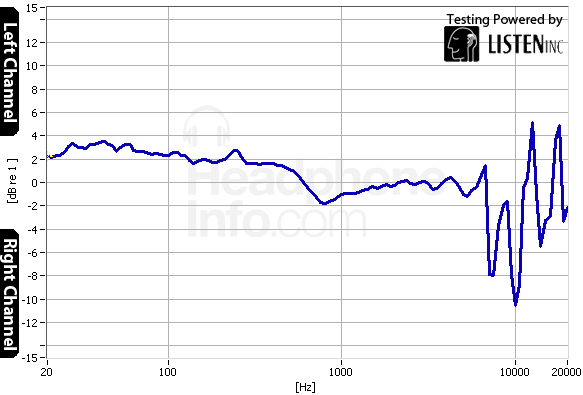
Click here for more information on our frequency response test.
Isolation
{{section_header}}{{section.name}}{{/section_header}}
We didn't expect the {{product.name}}s to block out much sound, as they have open backs. Unsurprisingly, they really don't attenuate any appreciable level of sound from the outside world, but that's really OK. If you're listening at home, there are those who appreciate the wide open soundstage, and there were many times when we were fooled into thinking that sounds from these cans were actually happening in the office. For very specific listening environments, isolation isn't exactly a high priority.

Click here for more information on our isolation test.
Leakage
{{section_header}}{{section.name}}{{/section_header}}
Much like how the outside world will be heard while you wear the {{product.model}}s, so too will the outside world hear what you're listening to, and how. These cans are definitely meant to stay by the computer.
Click here for more information on our leakage test.
Maximum Usable Volume
{{section_header}}{{section.name}}{{/section_header}}
The {{product.name}}s are capable of blasting sound at just over 110dB before they also output a 3% level of distortion, but you shouldn't be listening to your headphones this loudly anyway. It's nice to know that in theory your cans can blast music this loudly, but in reality: https://www.reviewed.com/headphones/News/Noise-Induced-Hearing-Loss-and-You.htm>you could very well damage your hearing irreparably
, which is a very sad thing for an audiophile to endure, especially if it's a very preventable condition.
Click here for more on our maximum usable volume test
Short-Term Use
{{section_header}}{{section.name}}{{/section_header}}
When we put the {{product.model}}s on our heads for the first time, we noticed right away that they gripped our skulls firmly, but the thick padding on the ear cups eliminated any discomfort we would feel. Simply put, for our size heads, the {{product.name}}s fit us well and are very comfortable to wear. Keep in mind though, you may or may not have a differently-proportioned head than we do, so try these on before you take the plunge and buy the {{product.name}}s!

Extended Use
{{section_header}}{{section.name}}{{/section_header}}
Over time, the wear didn't change, so the {{product.model}}s earn the same marks here.
Customizability
{{section_header}}{{section.name}}{{/section_header}}
Aside from the option of recabling, or plugging into a 1/8th jack, there isn't anything that you can do to customize your pair of {{product.model}}s.
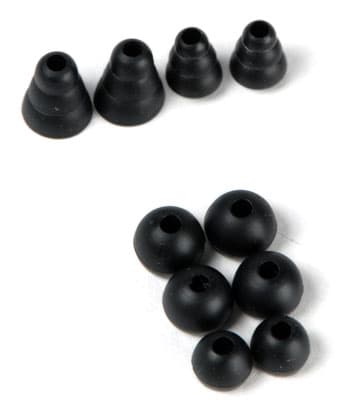
Cable Connectivity
{{section_header}}{{section.name}}{{/section_header}}
As previously mentioned, the {{product.name}}s have a 1/4th inch plug with a 1/8th inch adapter, but there are no other connectivity options with the {{product.model}}s unless you recable them.
Portability
{{section_header}}{{section.name}}{{/section_header}}
These cans were meant never to see the natural shine of sunlight in the outdoors. We would advise you that they should probably stay near the computer. Though they are light, they are also clunky, and do not collapse down well. The {{product.name}}s really weren't meant to port around.
Maintenance
{{section_header}}{{section.name}}{{/section_header}}
There isn't a whole lot you can do to maintain your cans, as the ear pads are not removable, and there are no included cleaning materials. Still, the ability to recable your headphones is very nice should something break, so the {{product.model}}s do get recognition for this feature.
Beyerdynamic DT 990 PRO
Design
On the one hand, you have the very pretty Sennheiser HD 598s, and the ugly duckling Beyerdynamic DT 990 PROs. Both have open-backed ear cup design, and both are very well regarded, but while the Sennheisers look beautiful, the Beyers make up for its deficiency in aesthetics with raw performance power. Keep in mind though, that the Senns are more durable than the DT 990 PROs, as you can replace their cables should something break.
Frequency Response
Here you see pictured two great frequency responses. At this point in the quality spectrum, you start to get to the point where how good something is depends on personal preference. As you can see, both responses are remarkably flat throughout the entire range of measured response, though the Beyers protect much more sound above 10kHz than the Sennheisers, as well as a slightly higher emphasis on bass, but not much.
Distortion
Neither set of cans has much appreciable amount of distortion, but the the DT 990 PROs don’t have the Sennheiser HD 598’s problem of distortion in the low end. Point for Beyerdynamic.
Tracking
Here too, the DT 990 PROs take the cake, as their tracking is almost immaculate, whereas the Sennheiser HD 598s have a few blemishes.
Isolation
Neither set of cans isolate well, nor were they intended to.
Comfort
Both set of headphones are extremely comfortable, and what people consider to be more comfortable seems to vary between people in the office, so we’re going to reiterate what we tell everyone: try them on before you buy. We all have differently-sized heads, so what is comfortable for us may be torturous to you.
Verdict
We’ll leave this decision up to you, as there are clear upsides to both. Both sets of headphones have great performance, but the Sennheisers look like something taken from Imperial era Russia, and the Beyers do not have any frills to their appearance. Aside from looks, the frequency responses are different, but neither objectively superior to the other. You’ll just have to look over the review and decide which you like better.
Sennheiser HD 555
Design
A while back, Sennheiser released the HD 555, a pair of over-ears very similar to the HD 595s and HD 598s. So similar, in fact, that some question if the actual differences between the two sets of cans are due to a small bit of foam in the HD 555s’ open backing. We here at HeadphoneInfo.com weren’t enterprising enough to take both sets apart to find out for ourselves, but we will compare each to give you a better idea of how they stack up.
Frequency Response
Both sets of cans have relatively flat frequency responses, but the HD 555s tend to underemphasize the lowest end of frequencies, and its chart reads more like a seismograph earlier on than the HD 598s. The HD 598s take this one, unless you hate bass.
Distortion
Both have their issues with distortion in the lowest end, but the HD 555s seem to have a bigger problem here than the Sennheiser HD 598s do.
Tracking
Oddly enough, the HD 555s and the HD 598s seem to have relatively similar tracking responses, garbage data at the end of the older graph aside. Neither impresses here, but we’ll give the edge to the HD 598s, as they do slightly better.
Isolation
Neither set of cans isolate well, nor were they originally designed for this purpose. These headphones were designed with an open and airy soundstage in mind, so isolation was a necessary casualty.
Comfort
Both sets of headphones are remarkably similar in terms of comfort, but as we all have differently-sized heads! Try them on for yourself before buying to ensure you get the headset that’s right for you.
Verdict
The Sennheiser HD 598s are better in just about every category, but they are extremely similar in many regards to the HD 555s. We can’t say for sure why this is so, but we assume that because they both share a similar design from the same company. It doesn’t surprise us that they’re very similar in performance, but for those looking to save a few bucks, you may want to consider the HD 555s.
Etymotic Research Mc5
Design
Though we don’t need to tell you that the design of an over-ear headphone unit and an in-ear one are very different, there are certain advantages and disadvantages to each that may make you reconsider your choices when picking a set of cans.
Frequency Response
Now here’s an interesting matchup. While the Sennheiser HD 598s have a very flat response, the mc5s have a response with a slightly boosted upper-midrange. Both headphones are impressive here.
Distortion
The mc5s win this one hands-down, as they are near reference-quality.
Tracking
Here too, the mc5s have the better response, as they are not as erratic as the Sennheiser HD 598s.
Isolation
Here’s the area with the biggest difference between these two superstars: where the Sennheiser HD 598s are intended to have an open soundstage, and therefore little to zero noise attenuation, the mc5s were meant to be taken out into the world and offer insane amounts of noise attenuation. This one is up to personal preference in your listening environment, but keep in mind that you will leave the house for something, so you may want a versatile pair of headphones.
Comfort
Here is a clear advantage of the Sennheiser HD 598s, as they are very comfortable. The mc5s, on the other hand, have sometimes been described as “I feel like I have an ear infection” and “wow these feel weird.” It’s not surprising, as you’re essentially jamming a bit of plastic where no foreign object was meant to go.
Verdict
This really depends on your intended usage; if you want high-quality audio at home, never to leave the computer or entertainment center, go for the Sennheiser HD 598s. If you want to take your headphones out into the world, absolutely go for the mc5s.
Bowers & Wilkins PF-M5I
Design
The Bowers and Wilkins PF-M5Is aren’t exactly audiophile headphones, but what they lack in high-performance they make up for in style. Though on-ears are typically a little less than outstanding performers, the PF-M5Is will give you decent quality portable audio and a splash of style that you can take outside (unlike the Sennheiser HD 598s).
Frequency Response
This comparison plays to the Sennheiser HD 598s’ strengths, as their frequency response is remarkably flat, and without many blemishes. Still, there are those who like emphasis on bass frequencies, and those who are looking for a little more punch may be interested in the sound output of the PF-M5Is.
Distortion
Both headphones have slight distortion issues, the PF-M5Is having a low general distortion problem, and the Sennheiser HD 598s having an issue with only the low end.
Tracking
The Sennheiser HD 598s take this one, hands-down. Though their tracking isn’t perfect, they absolutely do a better job than the more erratic PF-M5Is.
Isolation
The PF-M5Is do a better job of isolation, but just barely. Though it isn’t much of a problem if your headphones block out much sound at home, it can lead to problems outdoors if you adjust your volume to drown out the outside world.
Comfort
We’re going to give this one to the Sennheiser HD 598s, though your mileage can and often will vary. The HD 598s have very soft padding, and distribute their weight more evenly than the on-ear PF-M5Is. Still, you may decide that you like the Bowers & Wilkins design better, so try on your cans before you buy; it’s the only real way you can be sure that you will enjoy the fit is to try them on for yourself.
Verdict
We’re going to give this one to the Sennheiser HD 598s, but only if you intend to use them at the computer with a good source. Otherwise, if you’re going to be going out in the world, you can’t exactly rely on open-backed headphones to survive the wear and tear of life away from climate control. You’ll just have to weigh your options for yourself.
Conclusion
{{section_header}}{{section.name}}{{/section_header}}
Our final verdict? These headphones are great. Not only do they provide a flat frequency response and clear sound, but their open soundstage helps provide a very realistic sound. Though these cans aren't perfect (we're still waiting on that to happen), they do field a strong performance, and should satisfy a large swath of audiophile consumers. They aren't able to go outside, but really, they were never intended to in the first place. Good show, Sennheiser!
Meet the tester
A seasoned writer and professional photographer, Chris reviews cameras, headphones, smartphones, laptops, and lenses. Educated in Political Science and Linguistics, Chris can often be found building a robot army, snowboarding, or getting ink.
Checking our work.
Our team is here to help you buy the best stuff and love what you own. Our writers, editors, and experts obsess over the products we cover to make sure you're confident and satisfied. Have a different opinion about something we recommend? Email us and we'll compare notes.
Shoot us an email

